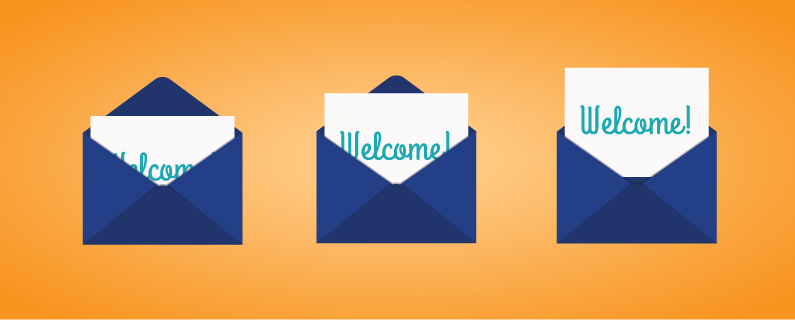
Email marketing is your gig, right? You know what you’re doing: you’re building good lists, have great content to share on a regular basis and you’re even able to do some pretty cool design work within your emails. So why do you keep seeing opt-outs and spam reports? Aren’t you doing everything right? Maybe. We’ve written before about a bunch of little things you can do to improve your email performance, but there’s always more ground to cover and more variables to sort out. One facet that we’ve yet to cover is the welcome email, and how much of an impact it can have on keeping a good relationship between you and the people on your email list.
Let’s first go over why you need a welcome email for your email marketing plan and then go over the basics of what a good welcome email is.
Why the need for welcome emails?
The welcome email, for how small and negligible it may seem, actually puts in a lot of work when it comes to building a relationship between your business and the people on your mailing list. Welcome emails are a nearly universal feature across all email service platforms, so there should be plenty of information on how to do so on the service of your choice.
A properly executed welcome email campaign will send a succinct email to any address that someone adds to your contact list. The instant notification that someone has successfully subscribed is fairly important. In my personal opinion, getting instant validation for giving out my email address gives the impression that whoever I gave it to has their stuff together, and isn’t haphazard about how they handle their email marketing. Sending out an instant email to new subscribers will also make your newsletter a familiar sight in the inbox. Say you were to not send a welcome email, but your next email newsletter goes out close to a month after I’ve joined. I’m likely to forget ever signing up for your newsletter, and your finely-crafted message goes straight to my spam folder. That’s no good.
Most people nowadays are fairly selective with who they give their email address to. The welcome email does the job of reassuring them that their contact information is in good, knowledgeable hands.
What a good welcome email is
Have you ever given your email address to a company to become part of their email newsletter list? If there’s an automated response to you being added to their database, that’s a welcome email. The welcome email has a few purposes, and it needs to fulfill all of them in a relatively small package.
Let the recipient know they’re on your list and thank them for joining
This one should be easy enough. Setting up an auto welcome email lets any newly joined members know they’re successfully subscribed, will let anyone who didn’t do so know there’s been an accident somewhere, and will start off with a humble “thank you” to your audience – a good bedrock of a relationship. Even better is a personal thank you from the business owner, written with personality.
Let your audience know what they can expect
If someone decides to subscribe to your email list, they likely already know what you do, so you can skip the introductions on your company and services. What you should tell them though, is what they can expect from your correspondences. Will you be sharing your blog content, monthly sales and promotions or seasonal tips for your area of expertise? Set up some expectations for your contacts, and then follow through on that tasty, tasty content.
Tell them how they can easily get off the list
This one may seem backwards to some people, but you have to accept the fact that people will want to unsubscribe and you need to give them that option straightaway. If you don’t, you risk your emails getting flagged as spam, which only serves to hurt your future correspondences to other potential customers, as more spam flags will tell the big email providers that your email isn’t worth the inbox and will go straight to trash. Letting your audience know exactly how to get off the list should be one of the first items your email addresses.
Leave them wanting more
You may have noticed I’ve used the words “succinct” and “small” in referring to welcome emails. Guess what – that wasn’t hyperbole (or maybe hypobole?), the welcome email should not take more than 10-15 seconds to scan. If you bore your audience right out of the gate by blathering on and on, you’ve lost the fight before the war even started. Dial it back, give them just a taste, and make them want more.
So hopefully I’ve helped you see the light, and you’ll go right now to your email program or the person who runs your email and get a welcome campaign started. If so, that’s hella tight. If not, maybe there’s something else keeping you from getting the most out of your email marketing. If it’s more helpful, bite-size lessons like this one, check out all our recent blogs on email marketing, or if you’re ready to move on to Email 201, head over to our resources page and find Email Success in 6 Easy Steps.
Roundpeg is an Indianapolis content marketing firm.
